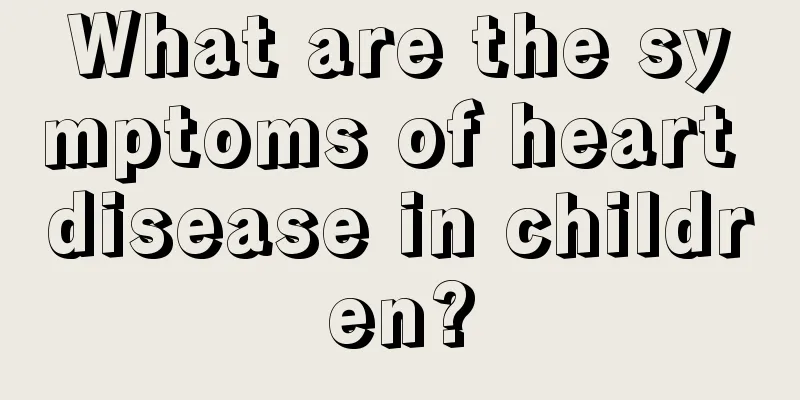What are the symptoms of heart disease in children?

|
Some children already have heart disease when they are born, and many pediatric heart diseases are affected by genetic factors. Pediatric heart disease can be diagnosed through some symptoms of the child, such as difficulty breathing, hemoptysis, edema, etc. These more obvious symptoms can allow parents to discover them in time and then treat and relieve them through medical means. Palpitations It is one of the most common symptoms of heart disease. The patient feels his heart racing or panic, accompanied by discomfort in the precordial area. When the heart rate is slow, he often feels a strong heartbeat. When the heart rate speeds up, he can feel his heart beating and even vibration in the precordial area. A physical examination may reveal a fast, slow, or irregular heart rate. Various heart diseases can present with this symptom. fatigue It is a common symptom of heart disease. When heart disease impairs blood circulation, metabolic waste (mainly lactic acid) accumulates in tissues, stimulating nerve endings and causing fatigue. Fatigue can be mild or severe. Mild fatigue may not be a concern, but severe fatigue may interfere with work. But heart disease fatigue is not specific and is difficult to distinguish from fatigue caused by other diseases. trouble breathing It is an important symptom of respiratory insufficiency. The patient subjectively feels that there is not enough air, and objectively manifests as labored breathing. In severe cases, nasal flaring, cyanosis, and orthopnea occur, and the auxiliary respiratory muscles are involved in respiratory activities. There may also be abnormalities in respiratory rate, depth, and rhythm. Common in left ventricular failure. Edema When there is excess fluid accumulation between human tissues, it is called edema. Edema can be divided into systemic and local. When the amount of fluid is considerable, pitting edema occurs. Common in right heart failure. Hemoptysis It is more common in patients with mitral stenosis. Due to the existence of collateral circulation between the pulmonary veins and bronchial veins, increased pulmonary venous pressure can increase the blood pressure of small veins in the subbronchial mucosa, leading to varicose veins and rupture and bleeding. |
<<: What causes bedwetting in children?
>>: What are the symptoms of mycoplasma infection in children?
Recommend
How to treat Mycoplasma pneumonia in children?
Mycoplasma pneumonia is quite common in our lives...
What causes high white blood cell count in children’s urine test?
When children go to the hospital for a physical e...
What's wrong with a two-year-old who can't speak?
After a child is born, parents are very much look...
Why does a child blush? What are the countermeasures?
Children's skin is relatively tender compared...
What happens if a newborn baby poops blood?
Many mothers are shocked when they find blood in ...
How much sleep does an 80-day-old baby need?
I believe that many people think of babies as &qu...
What can children eat to grow taller?
I believe that when we were young, every time we ...
What causes children to sweat while sleeping?
Children often sweat when sleeping at night, but ...
How to increase nutrition for thin baby
We will find that many babies are very fat in nor...
What should I do if my baby has a high fever, diarrhea and vomiting?
My baby has had high fever, diarrhea and vomiting...
What should I do if my child has a wheezing sound in his throat?
Most parents find that their children have phlegm...
What is the problem with a child's forehead protrusion?
What is the cause of my child’s protruding forehe...
Can babies eat prunes? Let’s take a look at these suggestions
Prunes are produced in the southwest of France. T...
What should I do if my newborn baby has loose stools?
As babies grow up, most of them are fed with brea...
Early symptoms of tics in children
Children’s health is often what parents care abou...









